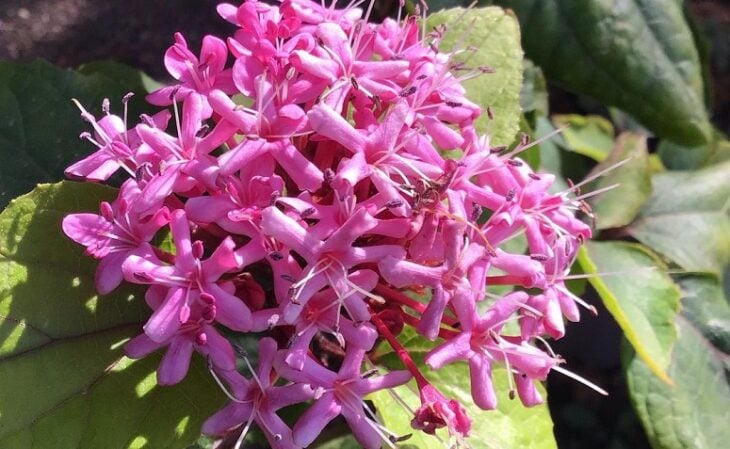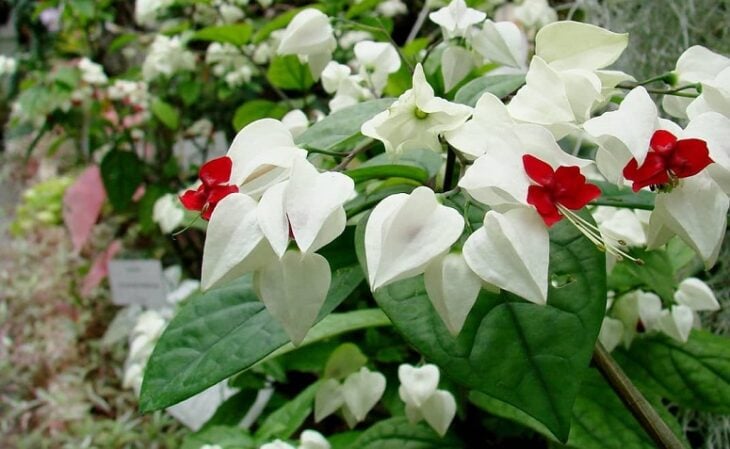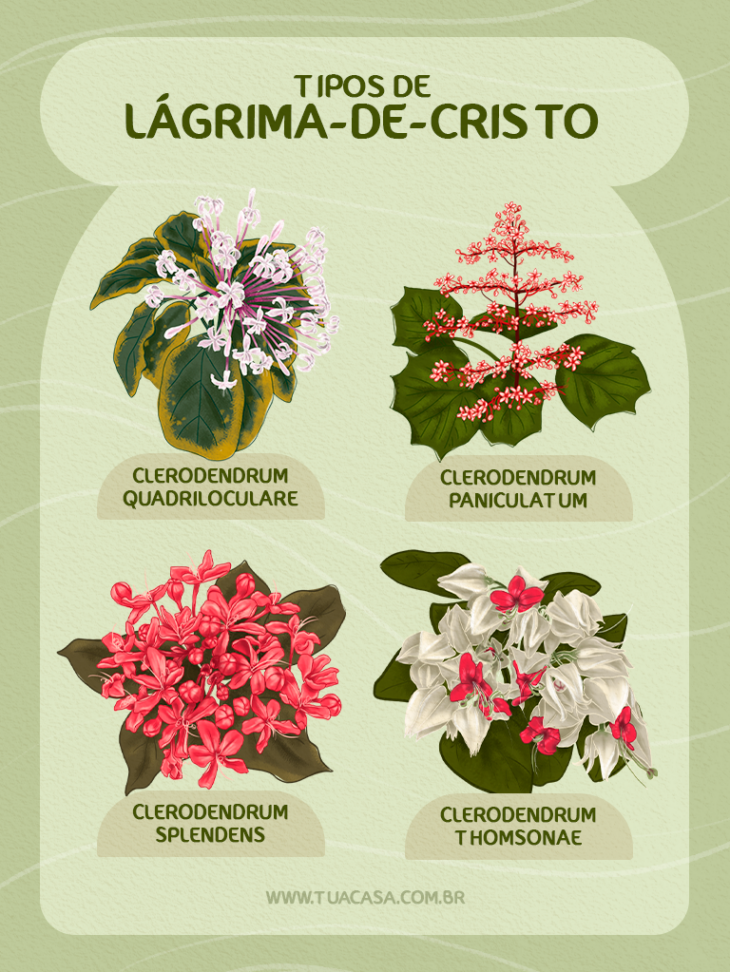Table of contents

The Christ's tear, or Clerodendrum thomsonae Native to Africa, this little plant has charming flowers that are full of varieties.
How to care for chrysalis tear
The lágrima-de-crist is an easy plant to grow and requires little maintenance. However, there are some basic essential cares to guarantee its flowering. Therefore, gardener Marcelo Sampaio shares some tips to guarantee more charm and health in its cultivation:
See_also: Tik Tok Party: modern ideas for a stylish celebration1. watering
"The watering must be intense and abundant, because the lágrima-de-crist is a climber of large size", says the specialist. Thus, adequate irrigation should be done only when the substrate is dry. In the winter period, it is necessary to reduce the amount of water in the soil, because the climate makes the plant more humid.
2. fertilization

Fertilizing is important to guarantee the growth and blossoming of the lágrima-de-cristo. According to Sampaio, "it can receive a quality fertilizer every 3 to 4 months". It is possible to fertilize it with organic fertilizers, such as worm humus, or industrialized fertilizers, such as NPK-10-10-10. Finally, the gardener reminds us that it is necessary to obey the indications of the manufacturer of each product, because fertilizing requiresmuch care and attention.
3. luminosity

The species appreciates full sun. That is, direct sunlight is essential to ensure growth and flourishing. According to the gardener, "it is not recommended to grow indoors, only in gardens and outdoor areas. So, think carefully about where you will put your little plant, because it needs intense light.
4. ideal soil

The lágrima-de-cristo adapts to different types of soil, but, like most plants, it appreciates a substrate rich in organic matter and well-drained, "it is also common to grow in sandy soils and with compositions based on dried leaves," he adds.
5. seedlings

According to Sampaio, "the lágrima-de-cristi develops through cuttings and seeds". To grow from cuttings, it is recommended to plant in a moist soil rich in nutrients. But before doing this process, stimulate rooting by placing the branches in water.
6. cultivation

Although it is common in gardens and open areas, the plant can be grown in pots. For this type of cultivation, the specialist recommends the use of large containers to ensure the best development of its roots: "Planting in a pot also needs to have a support for the plant to stand on, such as trellises, stakes, or even trees.
7. flowering

For many, the beauty of the lágrima-de-crist is its blooming. This process usually happens in the spring and summer seasons. To make it easier, Sampaio states that "the climber needs to be under full sun and receive proper care in fertilization. However, "it is necessary to respect the plant's development process, because each one has its own time.
With these valuable guidelines, you will surely succeed. The tip is to pay attention to fertilization and light, because these two factors are essential for the plant to grow healthy and flourish.
Types of teardrops
The Clerodendrum is a plant of the Lamiaceae family, which has more than 150 varieties. Each species has flowers and leaves with particular characteristics. Below, check out the 4 most common types of Clerodendrum, according to the expert:
See_also: 25 dining room pictures that transform the environment through art
- Clerodendrum thomsonae : This variety is one of the most cultivated in Brazil. It has flowers mixed between white and red, but you can also find combinations between pink and wine. Flowering occurs between summer and early fall.
- Clerodendrum splendens : The species has great ornamental value, as its flowers provide beautiful arrangements. Its blooming period is from winter to spring.
- Clerodendrum quadriloculare : Known as 'Clerodendrum cotonete', the flower is native to the Philippines. Unlike most chrysanthemums, it has a bushy shape and elliptical flowers. It blooms in the spring.
- Clerodendrum paniculatum : Finally, this variety has an abundant bloom, which starts in summer and lasts until fall. The plant has clusters of red and orange flowers that grow erect.
Now you can choose your favorite one and create beautiful decorations with them. But first, go to the next topic for practical tips on how to grow your lágrima-de-crist.
Learn more about the Christ's tear
After learning about the gardener's tips, it is interesting to check out practical tips on growing the lágrima-de-cristis. Check out the selection of videos, with extra guidance and interesting trivia:
More tips for growing the Christ's tear
In this video, the landscape designer brings great ideas for decorating with the lágrima-de-crist. Take note of which environments are more suitable for the plant and, in this way, guarantee a flowered and delicate space. It is worth checking it out, because the expert also gives some tips that will be useful for growing the plant.
How to plant lágrima-cristi in a pot
To bloom vigorously, the lágrima-de-cristi needs to be grown in a nutrient-rich soil and given proper care regarding fertilization. Here, you learn how to grow the climber in a pot, with a suitable substrate and simplified practices. Take note of all the guidelines, especially if you plan to plant your specimen in a pot.
How to make seedlings of lágrima-de-crist
In this vlog, the gardener tells us how to multiply this plant by cuttings. The process, which uses the branches of the flower, can be done directly in the soil or in water, and does not harm the plant.
Tips for pruning the lágrima-cristi
Pruning is a common process in climbing plants, because it guarantees the cleanliness and beauty of the plant right after its flowering. Here you will see how to prune the lágrima-de-crist in a practical and very simple way. You need only pliers and propolis extract. To learn step by step and all the instructions, just watch the video.
With all these valuable tips, you can now include all the charm of the lágrima-de-crist in your decoration. The vine is easy to grow and will bring even more color and beauty to your garden.


